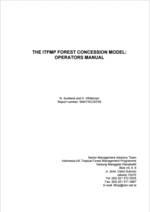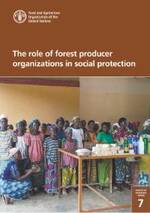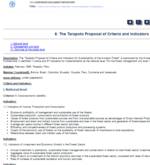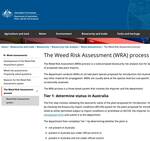Tools
A tool is a resource that supports and guides the implementation of SFM. This section includes all the tools available in the SFM Toolbox, which can be in form of publications, e-learning videos, software etc.
You can browse the Tools through keywords in the free search box or you can narrow the search using the filters on the right side of the page.
The FAO Forest and Water Programme, launched in March 2016, emerged with the vision that forests can contribute to solutions addressing water security by strategically managing them within the landscape for water resources. To increase our understanding of forest-water interactions and ensure that they are taken into account in policy...
The Forest Concession Model has been designed by the ITFMP Senior Management Advisory Team (SMAT) to assist with some of the complex calculations required in financial appraisal. The model is designed specifically to evaluate financial performance of the forest concession industry (HPHs). It can be used to evaluate data representative...
Welcome to the Fifth Edition of the “Booklet” about the Montréal Process Criteria and Indicators for the Conservation and Sustainable Management of Temperate and Boreal Forests. The Booklet presents the Montréal Process framework of seven criteria and 54 indicators, and the rationale for the inclusion of each indicator
within the relevant...
The mission of the Organisation for Economic Co-operation and Development (OECD) is to promote policies that will improve the economic and social well-being of people around the world.
The OECD provides a forum in which governments can work together to share experiences and seek solutions to common problems. OECD works with...
The ROSE tool was developed and refined during 2009 in the course of conducting case studies in Tanzania, Uganda, and Ghana. The tool has two main stages: a 2-3 day key informant or expert workshop, and an analysis of policy, legal, and institutional constraints by a small in-country team
following the...
This study reviews the literature on the provision of social protection by forest producer organizations, with a specific focus on their role and practices in this regard, the types of benefits they provide, the factors that may enhance or hinder the provision of benefits and the opportunities for taking advantage...
The SMART is an open source, non-proprietary, and freely available tool that covers three areas for conservation: software, capacity building, and site-based protection standards. SMART consists of a software application that enables practioners, protected area managers and other interested in the subject to collect, store, communicate, and evaluate...
Increasingly, cities and communities of all sizes recognize the importance of their tree cover and the need for plans to manage that natural resource. Far fewer actually have such plans in place, and where they do exist, many of those plans fall short in one way or another. This guide...
The “Tarapoto Proposal of Criteria and Indicators for Sustainability of the Amazon Forest” is sponsored by the Amazon Cooperation Treaty. The 8 participating countries propose 1 criterion and 7 indicators at the global concern. Furthermore, it identifies 7 criteria and 47 indicators for implementation at the national level. For the...
The Weed Risk Assessment (WRA) process is a science-based biosecurity risk analysis tool for determining the weed potential of proposed new plant imports.
The department conducts WRAs on all new plant species proposed for introduction into Australia as seeds, tissue culture or any other material for propagation. WRAs are usually done...










